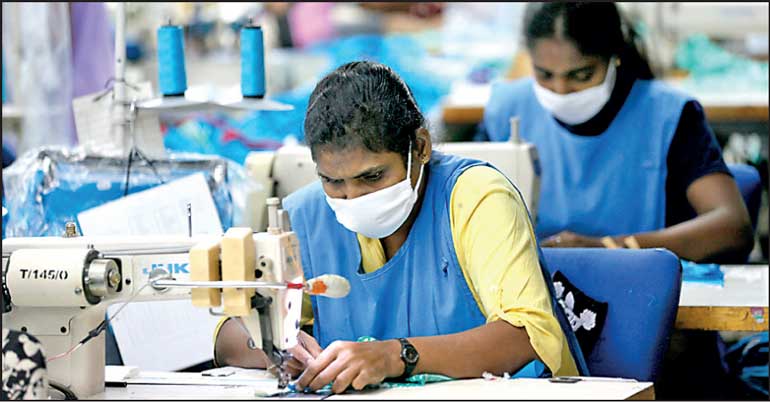Tuesday Apr 08, 2025
Tuesday Apr 08, 2025
Friday, 27 May 2022 00:28 - - {{hitsCtrl.values.hits}}

By Charumini de Silva
The Joint Apparel Association Forum (JAAF) yesterday affirmed the resilience of the industry augurs well towards achieving its target of $ 6 billion for 2022.
“Amidst significant turbulence, strong performance is testimony to the resilience of Sri Lanka’s apparel industry and augurs well for the progress towards realising the $ 6 billion target for the year,” JAAF Secretary General Yohan Lawrence told the Daily FT.
Earnings from textiles and garments increased by 10.8% in the first quarter to $ 1.5 billion from $ 1.33 billion in 2021. In March earnings however fell by 0.6% to $ 464 million from $ 467 million compared to the same period a year earlier, as per the latest external sector performance report of the Central Bank.
Exports of apparel and textiles increased to $ 445.79 million, up by 22.12% YoY in April, the provisional data released by the Export Development Board (EDB) showed.
JAFF Secretary General refuted claims that the industry is facing issues in releasing products into the market and procuring raw materials for production. “Factories have uninterrupted access to raw materials. Port operations are operating smoothly, without delays in loading or unloading cargo,” he said.
He said the situation with regards to the apparel industry in Sri Lanka is fluid, but certainly not volatile. “Time-tested systems of crisis management are in place and the industry is coping very well given the circumstances,” he said.
Although the industry notices a drop in orders for upcoming few months, they are banking on the high level of confidence among the buyers. “We are seeing a reduction of around 20% in the orders being placed by customers for July and August production. It is mainly due to the perceived country risk. However, the orders are being executed without too much issue at present,” Lawrence confirmed.
He also said that exporters have been allowed to purchase fuel directly from the Ceylon Petroleum Corporation (CEYPETCO) and Lanka IOC in dollars since April, adding that the mechanism has helped the industry to avoid undue disruptions from power cuts.
“In terms of fuel distribution, while minor delays were experienced during periods of curfew, bulk deliveries of diesel to apparel manufacturers have recommenced. As of last week, apparel exporting companies are among a prioritised list of services to receive fuel from specific fuel stations. With such measures in place, the industry can continue its day-to-day operations amidst the current fuel shortages,” Lawrence said.
As companies are now able to continue operations, the industry is hopeful of seeing fresh orders coming during the fall season.
Sri Lanka’s apparel sector contributes 6% to the country’s GDP and accounts for 40% of all exports. The sector provides direct employment to 350,000 workers and an additional 700,000 who receive livelihood opportunities as part of the greater supply chain.
The industry’s 2030 vision is to transform Sri Lanka into a global apparel hub, whilst the intermediate goal is to increase annual export earnings to $ 8 billion by 2025.
Discover Kapruka, the leading online shopping platform in Sri Lanka, where you can conveniently send Gifts and Flowers to your loved ones for any event including Valentine ’s Day. Explore a wide range of popular Shopping Categories on Kapruka, including Toys, Groceries, Electronics, Birthday Cakes, Fruits, Chocolates, Flower Bouquets, Clothing, Watches, Lingerie, Gift Sets and Jewellery. Also if you’re interested in selling with Kapruka, Partner Central by Kapruka is the best solution to start with. Moreover, through Kapruka Global Shop, you can also enjoy the convenience of purchasing products from renowned platforms like Amazon and eBay and have them delivered to Sri Lanka.
Discover Kapruka, the leading online shopping platform in Sri Lanka, where you can conveniently send Gifts and Flowers to your loved ones for any event including Valentine ’s Day. Explore a wide range of popular Shopping Categories on Kapruka, including Toys, Groceries, Electronics, Birthday Cakes, Fruits, Chocolates, Flower Bouquets, Clothing, Watches, Lingerie, Gift Sets and Jewellery. Also if you’re interested in selling with Kapruka, Partner Central by Kapruka is the best solution to start with. Moreover, through Kapruka Global Shop, you can also enjoy the convenience of purchasing products from renowned platforms like Amazon and eBay and have them delivered to Sri Lanka.